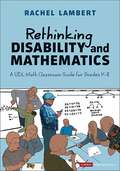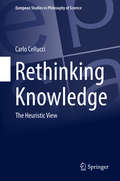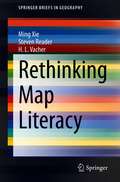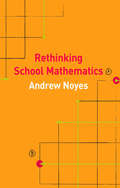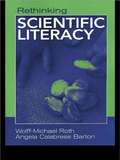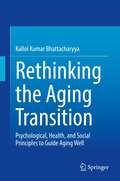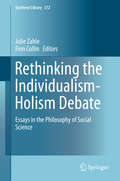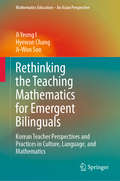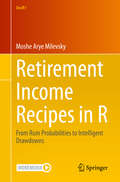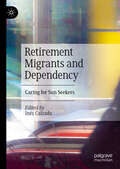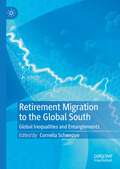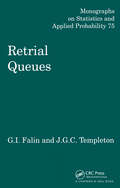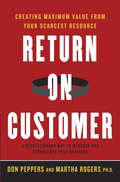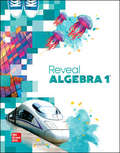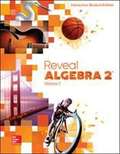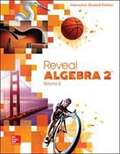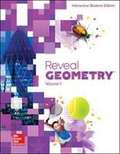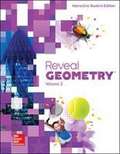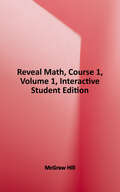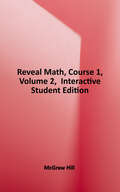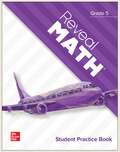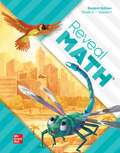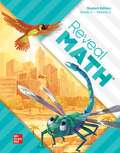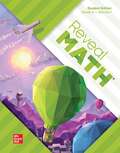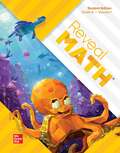- Table View
- List View
Rethinking Disability and Mathematics: A UDL Math Classroom Guide for Grades K-8 (Corwin Mathematics Series)
by Rachel LambertEvery child has a right to make sense of math, and to use math to make sense of their worlds. Despite their gifts, students with disabilities are often viewed from a deficit standpoint in mathematics classrooms. These students are often conceptualized as needing to be fixed or remediated. Rethinking Disability and Mathematics argues that mathematics should be a transformative space for these students, a place where they can discover their power and potential and be appreciated for their many strengths. Author Rachel Lambert introduces Universal Design for Learning for Math (UDL Math), a way to design math classrooms that empowers disabled and neurodiverse students to engage in mathematics in ways that lead to meaningful and joyful math learning. The book showcases how UDL Math can open up mathematics classrooms so that they provide access to meaningful understanding and an identity as a math learner to a wider range of students. Weaved throughout the book are the voices of neurodiverse learners telling their own stories of math learning. Through stories of real teachers recognizing the barriers in their own math classrooms and redesigning to increase access, the book: Reframes students with disabilities from a deficit to an asset perspective, paving the way for trusting their mathematical thinking Offers equitable math instruction for all learners, including those with disabilities, neurodiverse students, and/or multilingual learners Applies UDL to the math classroom, providing practical tips and techniques to support students′ cognitive, affective, and strategic development Immerses readers in math classrooms where all students are engaged in meaningful mathematics, from special education day classes to inclusive general education classrooms, from grades K-8. Integrates research on mathematical learning including critical math content such as developing number sense and place value, fluency with math facts and operations, and understanding fractions and algebraic thinking. Explores critical issues such as writing IEP goals in math This book is designed for all math educators, both those trained as general education teachers and those trained as special education teachers. The UDL Math approach is adapted to work for all learners because everyone varies in how they perceive the world and in how they approach mathematical problem solving. When we rethink mathematics to include multiple ways of being a math learner, we make math accessible and engaging for a wider group of learners.
Rethinking Knowledge
by Carlo CellucciThis monograph addresses the question of the increasing irrelevance of philosophy, which has seen scientists as well as philosophers concluding that philosophy is dead and has dissolved into the sciences. It seeks to answer the question of whether or not philosophy can still be fruitful and what kind of philosophy can be such. The author argues that from its very beginning philosophy has focused on knowledge and methods for acquiring knowledge. This view, however, has generally been abandoned in the last century with the belief that, unlike the sciences, philosophy makes no observations or experiments and requires only thought. Thus, in order for philosophy to once again be relevant, it needs to return to its roots and focus on knowledge as well as methods for acquiring knowledge. Accordingly, this book deals with several questions about knowledge that are essential to this view of philosophy, including mathematical knowledge. Coverage examines such issues as the nature of knowledge; plausibility and common sense; knowledge as problem solving; modeling scientific knowledge; mathematical objects, definitions, diagrams; mathematics and reality; and more. This monograph presents a new approach to philosophy, epistemology, and the philosophy of mathematics. It will appeal to graduate students and researchers with interests in the role of knowledge, the analytic method, models of science, and mathematics and reality.
Rethinking Map Literacy (SpringerBriefs in Geography)
by Ming Xie Steven Reader H. L. VacherThis book provides two conceptual frameworks for further investigation of map literacy and fills in a gap in map literacy studies, addressing the distinction between reference maps and thematic maps and the varying uses of quantitative map literacy (QML) within and between the two. The text offers two conceptual frameworks and uses specific map examples to explore this variability in map reading skills and knowledge, with the goal of informing educational pedagogy and practices within geography and related disciplines. The book will appeal to cartographers and geographers as a new perspective on a tool of communication they have long employed in their disciplines, and will also appeal to those involved in the educational pedagogy of information and data literacy as a way to conceptualize the development of curricula and teaching materials in the increasingly important arena of the interplay between quantitative data and map-based graphics. The first framework discussed is based on a three-set Venn model, and addresses the content and relationships of three “literacies” – map literacy, quantitative literacy and background information. As part of this framework, the field of QML is introduced, conceptualized, and defined as the knowledge (concepts, skills and facts) required to accurately read, use, interpret and understand the quantitative information embedded in geographic backgrounds. The second framework is of a compositional triangle based on (1) the ratio of reference to thematic map purpose and (2) the level of generalization and/or distortion within maps. In combination, these two parameters allow for any type of map to be located within the triangle as a prelude to considering the type and level of quantitative literacy that comes into play during map reading. Based on the two frameworks mentioned above, the pedagogical tool of “word problems” is applied to “map literacy” in an innovative way to explore the variability of map reading skills and knowledge based on specific map examples.
Rethinking School Mathematics
by Andy NoyesWhy is it that so many pupils are put off by maths, seeing it as uninspiring and irrelevant, and that so many choose to drop it as soon as they can? Why is it socially acceptable to be bad at maths? Does the maths curriculum really prepare pupils for life? This book presents some answers to these questions, helping teachers to think through their own attitudes to teaching and learning, and to work with pupils towards more effective and inspiring mathematical engagement. Part I of the book explores the nature of school mathematics - showing how the curriculum has been developed over the years, and how increasing effort has been devoted to improving the quality of mathematics teaching, with little apparent effect. Part II focuses on ways of thinking about classroom mathematics which take account of social, cultural, political and historical aspects. The chapters bring together a collection of activities, resources and discussion which will help teachers develop new ways of teaching and learning maths. This book will be essential reading for all maths teachers, including maths specialists on initial teacher training courses.
Rethinking Scientific Literacy (Critical Social Thought)
by Angela Calabrese Barton Wolff-Michael RothRethinking Scientific Literacy presents a new perspective on science learning as a tool for improving communities. By focusing on case studies inside and outside of the classroom, the authors illuminate the relevance of science in students' everyday lives, offering a new vision of scientific literacy that is inextricably linked with social responsibility and community development. The goal if not tote memorization of facts and theories, but a broader competency in scientific thinking and the ability to generate positive change.
Rethinking the Aging Transition: Psychological, Health, and Social Principles to Guide Aging Well
by Kallol Kumar BhattacharyyaThe transitional phase from pre-older adult to older adult affects the wellbeing of the concerned person economically, physically, and psychologically. This book is a description of the aging transition and discusses various psychological, health, and social challenges faced by older adults globally. It also offers a comparative study on the lifestyles of older adults in India and the United States.Although there is no consensus yet on an all-encompassing theory of aging, this book centers on various theories related to aging processes in an effort to advance discussion on different aspects of aging. Various theoretical formulations, such as person-centered, Hinduism, biopsychosocial, and positive psychology, guided the author to address the topics covered in this volume.Aging and PhysiciansAging and RetirementAging, Caregiving, and COVID-19Aging and DiversityAging and LongevityAging, Disease Prevention, and TechnologyAging and SpiritualityThrough the chapters, the author builds an understanding of the fundamental relation of aging with various health and socioeconomic factors, and also emphasizes a person-centered, holistic approach that values personal autonomy, choice, comfort, dignity, and purposeful living to support aging well. Rethinking the Aging Transition: Psychological, Health, and Social Principles to Guide Aging Well has academic value from a multicultural perspective that would be of benefit to graduate and undergraduate students in gerontology and other disciplines that study aging and older adult populations. With the main aim of raising awareness, this book is an important resource for a diverse group of populations globally, including clinical and non-clinical caregivers, other health(care) professionals, and policy-makers.
Rethinking the Individualism-Holism Debate: Essays in the Philosophy of Social Science (Synthese Library #372)
by Finn Collin Julie ZahleThis collection of papers investigates the most recent debates about individualism and holism in the philosophy of social science. The debates revolve mainly around two issues: firstly, whether social phenomena exist sui generis and how they relate to individuals. This is the focus of discussions between ontological individualists and ontological holists. Secondly, to what extent social scientific explanations may and should, focus on individuals and social phenomena respectively. This issue is debated amongst methodological holists and methodological individualists.In social science and philosophy, both issues have been intensively discussed and new versions of the dispute have appeared just as new arguments have been advanced. At present, the individualism/holism debate is extremely lively and this book reflects the major positions and perspectives within the debate. This volume is also relevant to debates about two closely related issues in social science: the micro-macro debate and the agency-structure debate.This book presents contributions from key figures in both social science and philosophy, in the first such collection on this topic to be published since the 1970s.
Rethinking the Teaching Mathematics for Emergent Bilinguals: Korean Teacher Perspectives and Practices in Culture, Language, and Mathematics (Mathematics Education – An Asian Perspective)
by Ji-Won Son Hyewon Chang Ji Yeong IThis book focuses on the role of cultural background in Korean public schools, and provides essential insights into how Korean teachers perceive and respond to the transition of their classroom situations with Korean language learners. It reveals the perspectives and the practices of Korean teachers, especially with regard to multicultural students who struggle with language barriers when learning mathematics. The information provided is both relevant and topical, as teaching mathematics to linguistically and culturally diverse learners is increasingly becoming a worldwide challenge.
Retirement Income Recipes in R: From Ruin Probabilities to Intelligent Drawdowns (Use R!)
by Moshe Arye MilevskyThis book provides computational tools that readers can use to flourish in the retirement income industry. Each chapter describes recipe-like algorithms and explains how to implement them via simple scripts in the freely available R coding language. Students can use those skills to generate quantitative answers to the most common questions in retirement income planning, as well as to develop a deeper understanding of the finance and economics underlying the field itself. The book will be an excellent asset for experienced students who are interested in advanced wealth management, and specifically within courses that focus on holistic modeling of the retirement income process. The material will also be useful to current and future wealth management professionals within the financial services industry. Readers should have a solid understanding of financial principles, as well as a rudimentary background in economics and accounting.
Retirement Migrants and Dependency: Caring for Sun Seekers
by Inés CalzadaThis book tells the story of what happens when the “adventure” of living in Spain turns complicated due to the emergence of care needs derived from loss of autonomy. It investigates the care strategies of retirement migrants that must navigate a foreign welfare system and a different “culture of care”, and how the COVID-19 pandemic exacerbated the difficulties they experience accessing care services and information. The book condenses the results of a 4-year (2019-2022) research project funded by the Spanish Ministry of Science under the title “Retirement migration and the Social Services” and applies a mixed methods approach that combined statistical analysis of secondary data; telephonic interviews with the coordinators of Social Services in more than 80 Spanish municipalities with a high presence of retirement migrants; ethnographic case studies in four municipalities (observation, interviews, focus groups); and an online survey with social workers.
Retirement Migration to the Global South: Global Inequalities and Entanglements
by Cornelia SchweppeThis book examines the increasing evidence of international retirement migration (IRM) to countries of the Global South. IRM to countries of the Global South points to the increasing global interconnectedness of aging in relatively affluent countries and raises critical questions about its interrelations with global inequalities. This book provides a critical analysis of these global interrelations and their intertwinements with global inequalities and addresses the complex and multi-layered dimensions and implications of this development. It highlights the (ambiguous) everyday lives of retirement migrants in the countries of destination, and the severe impacts on the destination countries that are marked by processes of recolonization, and the reproduction, enhancement and reconfiguration of social inequalities. The growing retirement industry that capitalizes on retirement migration exploiting global differences and structural disadvantages of countries in the Global South is another integral part of this book.
Retrial Queues
by J.G.C. Templeton G.I. FalinBased on the careful analysis of several hundred publications, this book uniformly describes basic methods of analysis and critical results of the theory of retrial queues. Chapters discuss: analysis of single-server retrial queues, including stationary and transient distribution of the number in the system, busy period, waiting time process, limit theorems, stochastic inequalities, traffic measurement multiserver retrial queues - ergodicity, explicit formulas, algorithmic solutions, limit theorems, approximations advanced single-server and multiserver retrial queues - models with priority subscribers, non-ersistent subscribers, finite source queues Lecturers, researchers, and students in probability, statistics, operations research, telecommunications, and computer systems modeling analysis will find Retrial Queues to be an invaluable resource.
Return On Customer
by Don Peppers Martha RogersVirtually everyone agrees that a company's most important and scarcest asset is its customers. Yet the value of this vital asset is routinely ignored. This is the first book to focus on assessing and tracking customer equity - i. e. , the lifetime value of current and future customers - and taking specific actions to increase that equity. Bestselling business authors Peppers and Rogers reveal the critical importance of measuring customers' long-term profitability, productivity and loyalty. They then identify the specific products, add-ons and services that managers and executives can use to increase the size and value of their customer base. Based on a blend of theory and practice, Return on Customer offers a genuine new way to make customer retention and value part of a company's core competitive advantage.
Reveal ALGEBRA 1®
by McGraw-HillThis is a blended print and digital program that supports access on the go. The Users can use the student edition as a reference as they work through assignments in the Student Digital Center, access interactive content, animations, videos, eTools, and technology-enhanced practice questions.
Reveal Algebra 2, Volume 1
by McGraw-Hill Education Firm StaffNIMAC-sourced textbook. Students explore, collaborate, and reflect to build confidence in their Algebra 2 math abilities using this volume 1 of 2 interactive student write-in text.
Reveal Algebra 2, Volume 2
by McGraw-Hill Education Firm StaffHigh school algebra, grades 9-12. NIMAC-sourced textbook
Reveal Geometry™, Volume 2
by McGraw HillStudents explore, collaborate, and reflect to build confidence in their Geometry math abilities using this volume 2 of 2 interactive student write-in text.
Reveal Math Course 1, Interactive Student Edition, Volume 1
by McGraw HillThis volume 1 of 2 interactive write-in student text lets students take ownership of their learning through rigorous content, a math-positive mindset, and formative assessments.
Reveal Math Course 1, Interactive Student Edition, Volume 2
by McGraw HillThis volume 2 of 2 interactive write-in student text lets students take ownership of their learning through rigorous content, a math-positive mindset, and formative assessments.
Reveal Math Grade 5 Student Practice Book (Reveal Math)
by McGraw-Hill EducationThe Student Practice Book provides two additional pages of practice for each lesson to further build proficiency and confidence with the lesson concepts.
Reveal Math Student Edition Grade 2 Volume 1 (Reveal Math)
by McGraw-Hill EducationCultivate mathematical student agency, growth mindset, and collaboration with the write-in Student Edition. Each volume is full-color and perforated for ease of use. This is volume 1.
Reveal Math Student Edition Grade 2 Volume 2 (Reveal Math)
by McGraw-Hill EducationCultivate mathematical student agency, growth mindset, and collaboration with the write-in Student Edition. Each volume is full-color and perforated for ease of use. This is volume 2.
Reveal Math Student Edition Grade 4 Volume 1 (Reveal Math)
by McGraw-Hill EducationCultivate mathematical student agency, growth mindset, and collaboration with the write-in Student Edition. Each volume is full-color and perforated for ease of use. This is volume 1.
Reveal Math Student Edition: Grade K, Volume 1 (Reveal Math)
by McGraw-Hill EducationCultivate mathematical student agency, growth mindset, and collaboration with the write-in Student Edition. Each volume is full-color and perforated for ease of use. This is volume 1.
